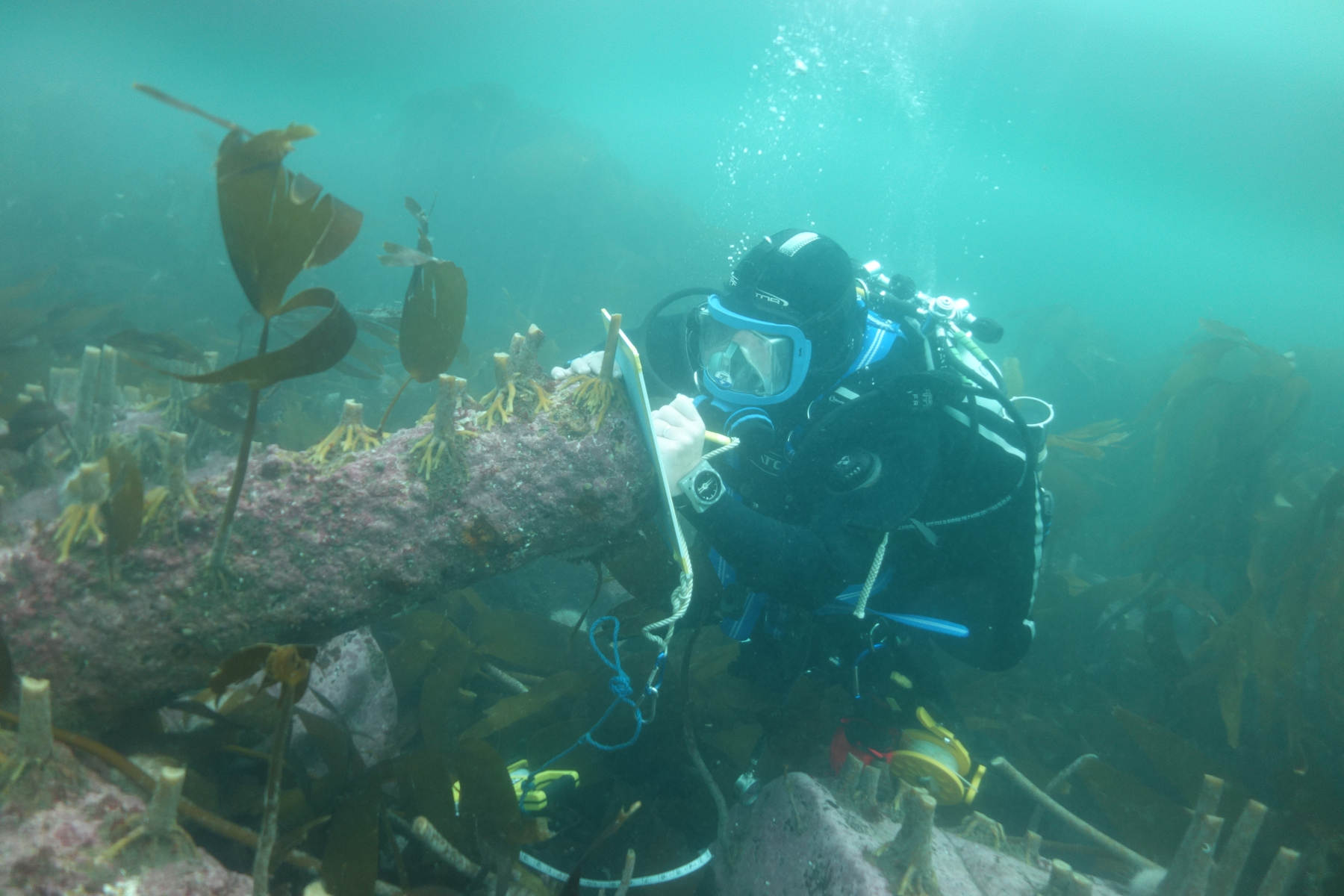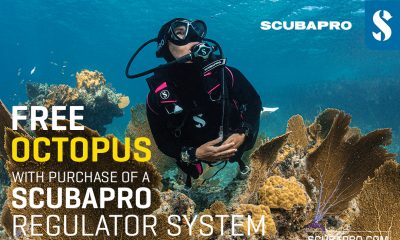News
Oceanic climate change and underwater archaeology

The identification of major environmental threats to cultural heritage and the built environment has been one of the core strands of our National Heritage Protection Plan with work already begun to assess the potential effects of climate change on the historic environment.
We already know that climate change is likely to mean that the UK will experience hotter, drier summers and warmer, wetter winters. There is a likelihood of increased drought, heatwaves, changes in seasonal precipitation and the intensity of weather events such as rainfall leading to flooding.
To date though there has been very little consideration given to how climate change might affect archaeological remains underwater. Even at a European level, there is a paucity of references to underwater cultural heritage within studies of climate change impacts: most recently, the EU-funded Climate for Culture project addressed only the built heritage.
It is already accepted that for the UK’s marine environment the impacts of climate change include relative sea level rise, increased seawater temperatures, ocean acidification and changes in ocean circulation which will affect underwater cultural heritage.
In the 20th century, the average level of the UK seas rose by some 14 cm. UK Climate Projections of UK coastal sea level rise (not including land movement) for 2095 range from 12 to 76 cm, with an extreme scenario for sea level rise in the range of 93 cm to 1.9 m by 2100.
Throughout this period, the effect of sea level rise on archaeological diving projects will be to incrementally reduce the amount of time (and therefore productivity) an air-breathing diver can spend underwater safely. For example, a 20% increase in diving depth can result in a 32% decrease in dive time.
UK waters have warmed over the past 50 years, at least partly because of human-induced climate change. UK Climate Projections indicates that UK shelf seas will be 1.5 to 4 °C warmer by the end of the 21st century. The upper ocean to the west and north of the UK has become saltier since a fresh period in the 1970s, but trends within the shelf seas are less clear. However, ‘warmer oceans’ indicates more energetic oceans so that erosion in shallow-water contexts may be enhanced, controlled by the seabed topography around the UK.
One particular effect of ocean warming already visible in UK waters is the northward migration of invasive species; of particular interest is the blacktip shipworm Lyrodus pedicellatus. Lyrodus p. is a species of shipworm that is active all year and has begun to invade the UK from more southerly latitudes as a result of sea temperature increase. It has been recorded off Cornwall, Langstone Harbour in Hampshire and on the Mary Rose protected wreck site in the Solent and in 2005 it was recorded on the coast at Sandwich, Kent. Considered to be a major threat to wooden wrecks and other wooden structures, the GB Non-native Species Secretariat (NNSS) does not yet identify Lyrodus p. as an invasive species to the UK.
The oceans play an important role in mitigating climate change, taking up and storing about a quarter of anthropogenic CO2 emissions through a combination of biological processes, solubility, and circulation patterns. However, dissolving excess atmospheric CO2 in surface waters has already noticeably increased their acidity and this may in turn affect the ocean’s ability to take up further CO2. Further chemical changes to the oceans will ultimately depend on the emissions pathway that society takes.
The direct effects of acidification upon the stability and condition of exposed wooden structures and iron and steel shipwrecks are not well understood, though decreases in ocean pH have the potential to increase current rates of metal corrosion.
It is believed that changes in ocean temperatures and wind patterns, resulting from the combined effects of overall climate change, will affect and alter oceanic currents. However, the large-scale circulation of the Atlantic, which helps to maintain the relatively temperate climate of Northern Europe, has shown high variability in recent years but no clear trend.
Other circulation patterns are likely to be as variable in the future as they are today, being mainly controlled by the complex topography of the seabed around the UK, as well as by highly variable tides, winds and density differences.
Understanding the impacts and effects of climate change is necessary to help us manage the marine historic environment in the future. We are therefore planning work to firstly understand the full extent of invasion by the Lyrodus p. shipworm and secondly to better understand the effects of chemical attrition on archaeological remains underwater by working with the UK Ocean Acidification Research Programme.
We need to ensure that we take full account of the findings of the latest UK Climate Change Risk Assessment, relevant national adaptation programmes and the latest set of UK Climate Projections. We also need to be mindful about balancing the scale of the effects or possible effects of oceanic climate change and we recognise that more work needs to be done to clarify this balance so that our priorities can be determined.
Gear News
Scubapro Free Octopus Promotion 2024

Free Octopus with every purchase of a SCUBAPRO regulator system
Just in time for the spring season, divers can save money with the FREE OCTOPUS SPRING PROMOTION! Until July 31st SCUBAPRO offers an Octopus for free
with every purchase of a regulator system!
Get a free S270 OCTOPUS with purchase of these combinations:
MK25 EVO or MK19 EVO with A700
MK25 EVO or MK19 EVO with S620Ti
MK25 EVO or MK19 EVO with D420
MK25 EVO Din mit S620Ti-X
Get a free R105 OCTOPUS with purchase of the following combinations:
MK25 EVO or MK19 EVO with G260
MK25 EVO or MK17 EVO with S600
SCUBAPRO offers a 30-year first owner warranty on all regulators, with a revision period of two years or 100 dives. All SCUBAPRO regulators are of course certified according to the new European test standard EN250-2014.
Available at participating SCUBAPRO dealers. Promotion may not be available in all regions. Find an authorized SCUBAPRO Dealer at scubapro.com.
More information available on www.scubapro.com.
Blogs
Northern Red Sea Reefs and Wrecks Trip Report, Part 3: The Mighty Thistlegorm

Jake Davies boards Ghazala Explorer for an unforgettable Red Sea diving experience…
Overnight, the wind picked up, making the planned morning dive a bit bumpy on the Zodiacs to the drop point on Thomas Reef. There, we would dive along the reef before descending through the canyon and then passing under the arch before ascending the wall with a gentle drift. The site provided great encounters with more pelagic species, including shoals of large barracuda, tuna, and bigeye trevally.
Once back on the boat, it was time to get everything tied down again as we would head back south. This time, with the wind behind us, heading to Ras Mohammed to dive Jackfish Alley for another great gentle drift wall dive before then heading up the coast towards the Gulf of Suez to moor up at the wreck of the Thistlegorm. This being the highlight wreck dive of the trip and for many onboard, including myself, it was the first time diving this iconic wreck. I had heard so much about the wreck from friends, and globally, this is a must on any diver’s list. Fortunately for us, there was only one other boat at the site, which was a rarity. A great briefing was delivered by Ahmed, who provided a detailed background about the wreck’s history along with all the required safety information as the currents and visibility at the site can be variable.

Kitting up, there was a lot of excitement on deck before entering the water and heading down the shoreline. Descending to the wreck, there was a light northerly current which reduced the visibility, making it feel more like the conditions that can be found off the Welsh coast. At 10m from the bottom, the outline of the wreck appeared as we reached the area of the wreck which had been bombed, as our mooring line was attached to part of the propeller shaft. Arriving on deck, instantly everywhere you looked there were many of the supplies which the ship was carrying, including Bren Carrier tanks and projectiles that instantly stood out.

We headed around the exterior, taking a look at the large propeller and guns mounted on deck before entering the wreck on the port side to take a look in the holds. It was incredible to see all the trucks, Norton 16H, and BSA motorcycles still perfectly stacked within, providing a real snapshot in time.

Overall, we had four dives on the Thistlegorm, where for all of the dives we were the only group in the water, and at times, there were just three of us on the whole wreck, which made it even more special, especially knowing that most days the wreck has hundreds of divers. Along with the history of the wreck, there was plenty of marine life on the wreck and around, from big green turtles to batfish, along with shoals of mackerel being hunted by trevally. Some unforgettable dives.

The final leg of the trip saw us cross back over the Suez Canal to the Gobal Islands where we planned to stay the night and do three dives at the Dolphin House for the potential of sharing the dive with dolphins. The site, which included a channel that was teeming with reef fish, especially large numbers of goatfish that swam in large shoals along the edge of the reef. These were nice relaxing dives to end the week. Unfortunately, the dolphins didn’t show up, which was okay as like all marine life they are difficult to predict and you can’t guarantee what’s going to be seen. With the last dive complete, we headed back to port for the final night where it was time to clean all the kit and pack before the departure flight the next day.

The whole week from start to finish on Ghazala Explorer was amazing; the boat had all the facilities you need for a comfortable week aboard. The crew were always there to help throughout the day and the chefs providing top quality food which was required after every dive. The itinerary providing some of the best diving with a nice mixture of wreck and reef dives. I would recommend the trip to anyone, whether it’s your first Red Sea liveaboard in the Red Sea or you’re revisiting. Hopefully, it’s not too long before I head back to explore more of the Red Sea onboard Ghazala Explorer.

To find out more about the Northern Red Sea reef and wrecks itineraries aboard Ghazala Explorer, or to book, contact Scuba Travel now:
Email: dive@scubatravel.com
Tel: +44 (0)1483 411590
Photos: Jake Davies / Avalon.Red
-

 News3 months ago
News3 months agoHone your underwater photography skills with Alphamarine Photography at Red Sea Diving Safari in March
-

 News3 months ago
News3 months agoCapturing Critters in Lembeh Underwater Photography Workshop 2024: Event Roundup
-

 Marine Life & Conservation Blogs2 months ago
Marine Life & Conservation Blogs2 months agoCreature Feature: Swell Sharks
-

 Blogs2 months ago
Blogs2 months agoMurex Resorts: Passport to Paradise!
-

 Blogs2 months ago
Blogs2 months agoDiver Discovering Whale Skeletons Beneath Ice Judged World’s Best Underwater Photograph
-

 Gear Reviews3 months ago
Gear Reviews3 months agoGear Review: Oceanic+ Dive Housing for iPhone
-

 Marine Life & Conservation2 months ago
Marine Life & Conservation2 months agoSave the Manatee Club launches brand new webcams at Silver Springs State Park, Florida
-

 News3 months ago
News3 months agoWorld’s Best Underwater Photographers Unveil Breathtaking Images at World Shootout 2023
















